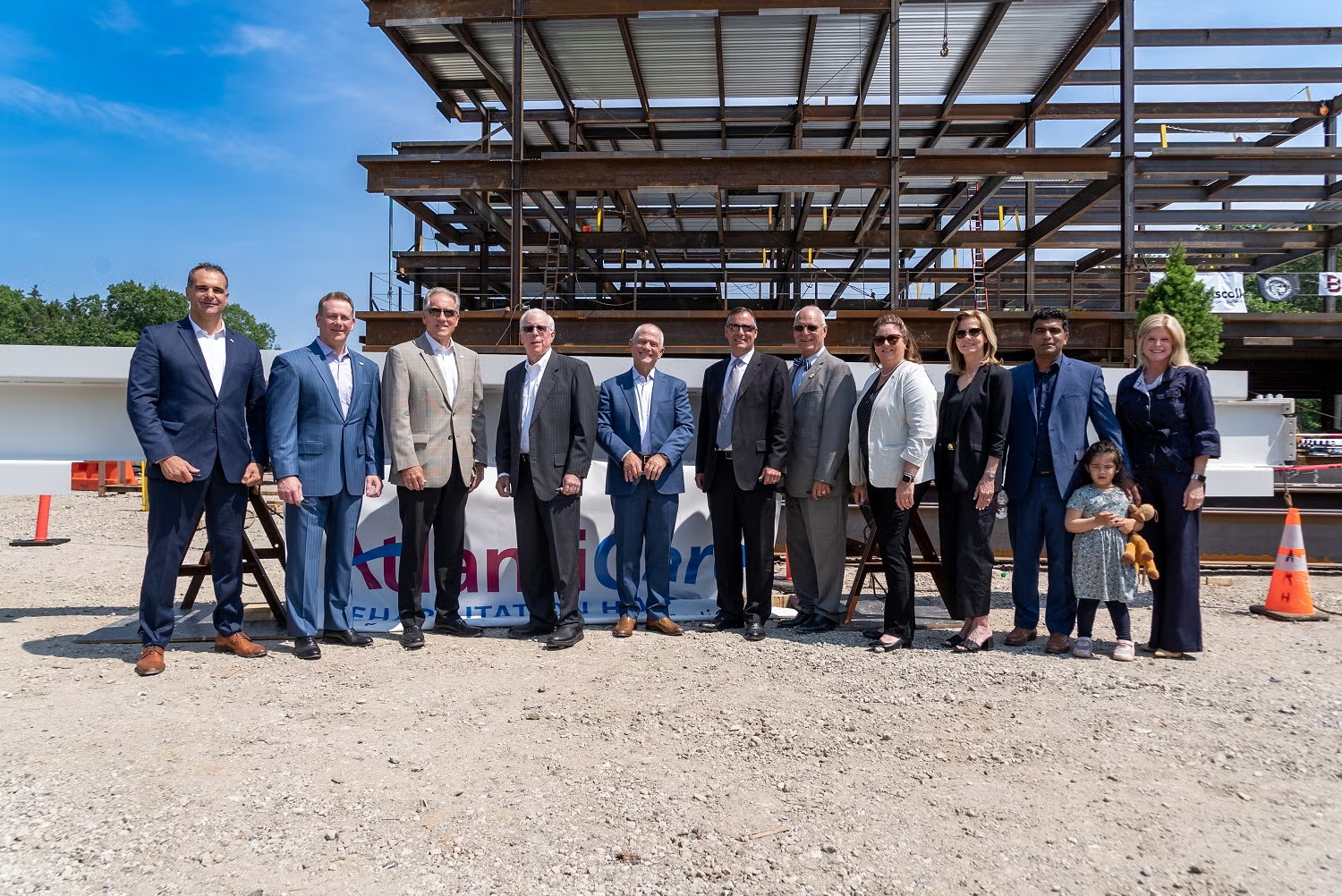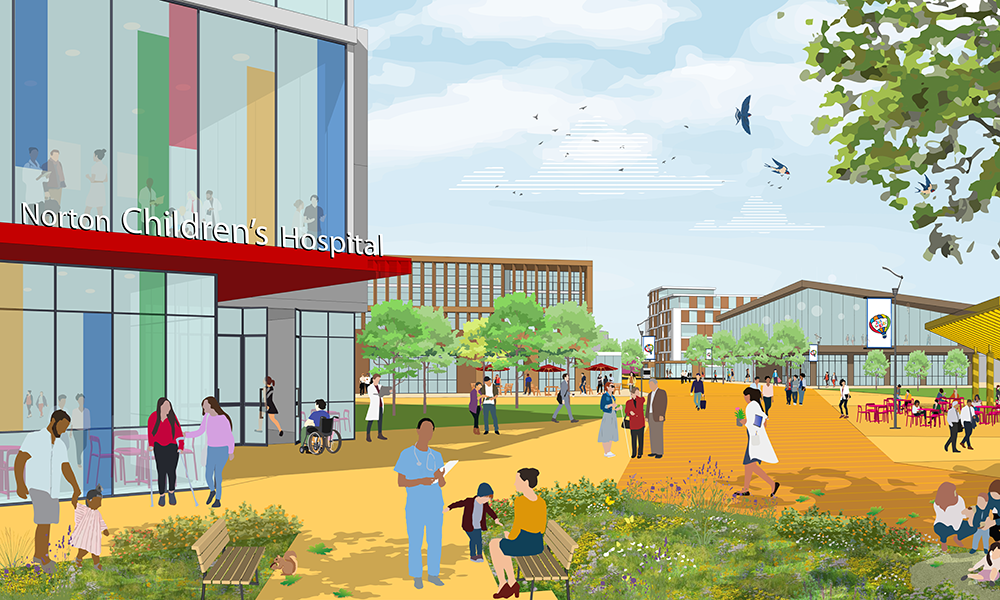Many U.S. hospitals are experiencing precipitous declines in their ability to fund construction as a result of the credit crisis and recession.
Building a healthcare facility in today’s economy takes courage. It also takes the foresight of healthcare decision-makers and designers to understand the delicate balance between the capital cost demands of the present and the life cycle and operational needs of the future. This balance can be achieved by carefully considered design tradeoffs and extra vigilance in the marketplace.
Many Americans have reached the conclusion that frugality is in vogue as they strive to do more during this recession. Like most Americans, healthcare leaders today have adopted the same mindset.
In order to think effectively about how they can do more with less from a cost standpoint, healthcare leaders must consider three main cost components when designing a new hospital facility: first- costs of capital improvements, life cycle costs of maintaining the physical plant over its economic life, and the operational costs of using the complex for its intended functions.
Managing First Costs
First costs, with their urgency and immediacy, seem to be the highest priority for healthcare clients seeking to build new projects. Even in trying times, however, it is important to remember that ultimate life cycle and operational costs will dwarf the capital costs of the initial construction period.
First costs can be 10 percent or less of the total cost of healthcare facility ownership. Designing buildings that increase the productivity and well-being of users for the long haul is fiscally sound. Frugality is in, but so is wisdom about the future.
During the last decade, capital cost escalation has motivated many healthcare owners to look at faster project execution. Responding to this concern, design firms have effectively evolved, facilitating faster design processes and minimizing design changes and construction rework.
The rising popularity of integrated project delivery, which employs collaborative cross-disciplinary teams from project inception, fosters earlier decision-making, better-coordinated designs and smoother construction.
In the past few months, the economy has shifted in unprecedented ways, causing a sea change in the construction industry. Inflation is moderating and some construction costs are declining.
Forward-thinking design firms are resetting their priorities to take advantage of these realities for healthcare clients.
To optimize money-related decision-making, HGA employs a multi-step process that bases decisions on the importance of advantages. In addition, the increasingly popular integrated approach to delivering healthcare projects helps reduce costs dramatically.
With a useful life spanning over decades or even a century, new hospital facilities will outlast current market conditions and economic cycles. The future can be unpredictable, but dynamic energy costs and skilled labor shortages are likely to be continuing concerns.
|
Want to see more pictures? |
Selection of highly robust building systems that combine longevity with flexibility is always wise. For example, post-occupancy discussions have indicated that the most problematic systems to maintain and operate are mechanical/plumbing systems, especially HVAC and electrical systems. That is why professionals such as summersphc.com/greenfield/services/plumbing/drain-cleaning/ are brought in for these jobs to make sure they are handled with the utmost care.
Collectively, these components comprise more than one-third of the first cost of a typical acute care facility. The concerns are always two-fold: Are the systems built correctly and are they maintained properly?
Well-informed systems specification and thoroughly facilitated transitions from facility construction to operation are effective ways for designers to answer these questions.
Marketplace vigilance is also important. Consolidation in manufacturing industries worldwide has reduced the number of international manufacturers of common building equipment to a few global giants, such as providers of in-hospital elevators (five to seven firms per region) or large emergency generators (three firms). Naturally, the pressure to cut corners is immense.
Many building-component manufacturers are now streamlining their processes and hiring a wider range of installers to better compete. However, designers and owners need to be extra vigilant to ensure they are getting what they specified and paid for in terms of product lines and installation practices.
Some design decisions also have a much greater impact on cost than others. When it comes to cost-effective, yet reliable mechanical, plumbing and electrical systems, engineering experts offer several suggestions.
George Lui, a principal and lead mechanical engineer at M-E Engineers Inc. of Culver City, Calif., recommends reducing life cycle mechanical system costs by doing at least two things: “First, select high quality and readily available equipment backed up by good local service, and second, perform fundamental commissioning of the building control systems to ensure the systems really work.”
at least two things: “First, select high quality and readily available equipment backed up by good local service, and second, perform fundamental commissioning of the building control systems to ensure the systems really work.”
Sean Hira, also a principal and lead electrical engineer at M-E Engineers, suggests reducing lamp wattage aggressively with new technology, such as LED lamps, and using higher voltage distribution systems, such as 4,160 or 12,000 volt, instead of the typical 480-volt system.
“Higher voltage systems require smaller cabling, achieve lower utility rates and use less power,” he says.
Life Cycle Costs: Going Green
There is no question that sustainability is a dominant trend in our future, especially now that President Obama has taken office.
However, in times like these, the question has become: how green can a healthcare facility afford to be? The answer depends on the commitment, time horizon and financial wherewithal of the healthcare owner.
Larger healthcare systems like Kaiser Permanente have made proactive strides in being green systemwide. Other organizations make decisions on a case-by-case basis.
While simple green practices are not costly, measures for higher levels of LEED certification can increase first costs by 2 percent to 5 percent, or more. At HGA, we have found that many owners will approve green features that cost more but have a relatively short payback period of less than five years. Longer payback periods are more difficult to justify in this climate.
In line with the new frugality of 2009, healthcare design firms are helping owners reuse more of the existing physical plant. Users will live with some inconvenience in floor plan or ceiling height as long as basic needs are met: thermal comfort, good lighting and power, more storage and better circulation.
The handoff between construction and operations is also crucial to the success of many sustainable systems. Such systems rely on sophisticated technology, such as electronic building management systems. During the project closeout period, it is critical to provide good operations and management documentation to train facility managers thoroughly and to secure reliable service contracts from reputable local providers.
Operational Costs
Despite daunting first costs and the daily struggle to maintain the physical plant, the cost of patient care is ultimately the overriding issue in the healthcare industry.
In creating operating budgets, more than 75 percent may be allocated to staffing – more than energy, technology or other expenses. This is why the built environment plays such a critical role in reducing operating costs. If staff satisfaction and productivity improve, the bottom line improves.
To minimize disruption during a phased construction project, where institutions must remain in operation and many user groups must relocate gradually, simplifying the phasing can be very beneficial.
It is also important to motivate and empower people through the built environment. Some of the healthcare industry’s most innovative designers study the daily travel of various healthcare staff, such as nurses and medical technicians, in order to reduce work fatigue and improve patient interactions. From these studies, they can develop prototypical environments that radically streamline care-giving processes, optimize staffing and lead to better patient care outcomes.
Balancing first costs, life cycle costs and operational costs is clearly difficult in today’s economic environment. Nevertheless, with knowledgeable leadership, trusted advisors and innovative designers, healthcare decision-makers can do it. Yes, they can.
Joe Madda, AIA, LEED AP, is a principal and associate vice president for the Los Angeles office of architectural and engineering firm HGA Inc. He has more than 30 years of design and construction experience in healthcare.





